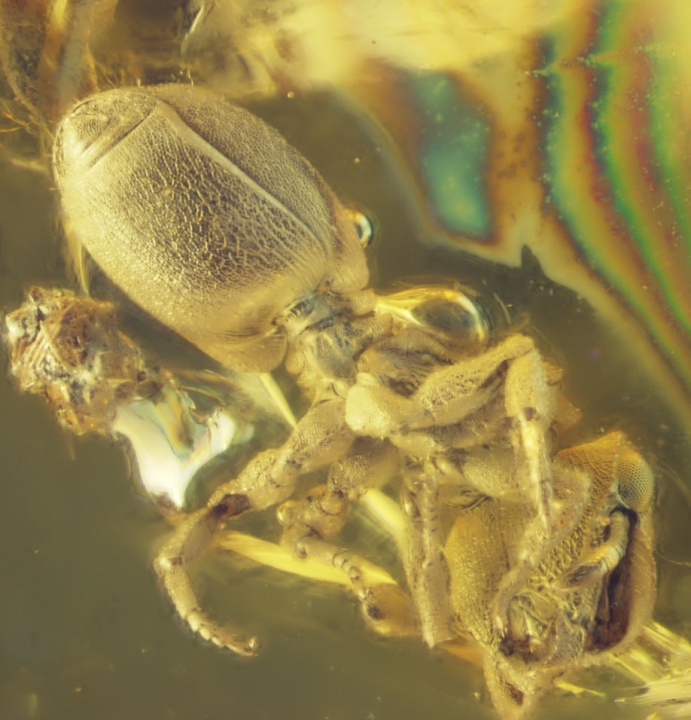FY2011 Annual Report
Biodiversity and Biocomplexity Unit
Evan P. Economo, Visiting Assistant Professor (FY2011)
Abstract
The Economo unit is scheduled to commence full-time activities at the OIST campus in June, 2012, and was part-time during FY2011. Research projects include macroevolutionary dynamics of the ant genus Pheidole, island biogeography of Fijian ants, theoretical investigations of biodiversity dynamics, and compilation and analysis of a global database of fossil and extant ant biodiversity.
1. Staff
- Dr. Benoit Guenard, Postdoctoral Researcher (hired Feb 2012)
2. Collaborations
- Theme: "Evolving Hyperdiversity in Geographic, Phenotypic and Ecological Networks: Testing the Taxon Cycle and Alternatives in Indo-Pacific Pheidole." Participating Researchers: Lacey Knowles, University of Michigan.
3. Activities and Findings
3.1. Understanding diversity by studying hyperdiversity.
In FY2011 Dr. Economo initiated a collaborative project with Dr. Lacey Knowles (University of Michigan), on a multifaceted analysis of a 'hyperdiverse' ant genus, Pheidole. The project, which is funded by the US National Science Foundation, uses molecular methods to reconstruct the evolutionary history in the genus. Using this evolutionary tree, we can infer past events such as when new evolutionary innovations arose, when lineages colonized particular continents, and when they evolved new ecological strategies. We particularly seek to understand how these transitions are linked together, how changes in morphology were associated with new ecological strategies, or how adaptation to a different environment promoted dispersal and range expansion. In FY2011 Dr. Economo assembled a large collection of Pheidole specimens from a network of collaborators, and initiated molecular work with colleagues at UM. First results are expected in FY2012.
 |
A Pheidole roosevelti major worker. The genus Pheidole is one of the two most diverse ant genera in the world, with over 1000 described species. Pheidole major workers, such as the one at left, have a distinctive head shape, earning them the nickname "big-headed ant". The project aims to reconstruct the evolutionary history of the genus, and ask what it tells us about evolution. |
3.2 A global database and analysis of ant fossils.
As biodiversity scientists, our goal is to document and understand the evolution and geographic distributions of life on Earth. Fossils are windows to the past that help us understand the present; illuminating how Earth's living systems got here and where we may be headed in the future. Dr. Benoit Guenard, a postdoctoral researcher in the Economo unit, has assembled a global database of ant fossils. This complements Guenard's previous work during his PhD thesis assembling a global datbase of extant ant genera. Working in collaboration with Paleoentomologist Dr. Vincent Perrichot, Guenard will use these data to analyze how ecosystems in different regions of the globe have changed over time. If we compare the ants found one place millions of years ago to current patterns of species distributions, we might find that ant lineages have shifted in location around the world. One possible reason for this is global climate change, which normally happens slowly over geologic time, but is now accelerating due to human activities. The effects of historical climate change on species and ecological communities gives us important clues to the possible effects of contemporary climate change on Earth's ecosystems. Results of this analysis will be submitted for publication in FY2012.
|
|
A fossil ant of the genus Cephalotes. This ant, from Dominican amber deposits, lived during the early Miocene around 20 million years ago. |
3.3 Biodiversity Theory
Dr. Economo continued his work on spatial biodiversity theory in FY2011. He presented new results at the Ecological Society of America Annual meeting relating to how complex network structure changes the outcomes of ecological community dynamics. He also has been working on looking at diversity dynamics and coalescence in coral reef dispersal networks. Finally, with collaborators at the University of Michigan, he has been working on integrating theoretical perspectives on biological diversity with theories of social diversity. Several manuscripts on these topics are in preparation as of end of year FY2011.
4. Publications
4.1 Journals
None in FY2011 with OIST affiliation
4.2 Books and other one-time publications
None yet.
4.3 Oral and Poster Presentations
- Economo, E.P., Treml, E. 2011. Drift, Determinism, and Biodiversity Persistence in Spatial Networks: The varied role of connectivity. Ecological Society of America Annual Meeting.
- Economo, E. P., Sarnat E. M. 2011. Revisiting the ants of Melanesia and the taxon cycle: historical and human-mediated invasions of an island ecosystem. Society of Population Ecology Annual Meeting.
- Economo, E. P., Sarnat, E. M. 2011. Revisiting the ants of Melanesia and the taxon cycle. Ecological Society of Japan Annual Meeting. Otsu, Japan.
- Guenard, B, Dunn, R.R. 2012. Spread and consequences of an unusual invasive ant species: the case of Pachycondyla chinensis. Ecological Society of Japan Annual Meeting. Otsu, Japan.
5. Intellectual Property Rights and Other Specific Achievements
None yet.
6. Meetings and Events
None yet.
7. Other
Nothing to report.




